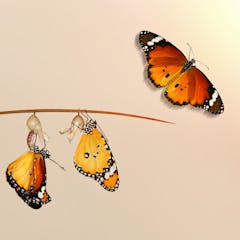
Articles on Evolution
Displaying 121 - 140 of 989 articles

Birdsong plays a vital social role in the lives of these gregarious finches.

Humans often look to nature for the solutions to complex problems – here are five times where biological processes have inspired innovation.

In winter, light in the northern latitudes is dim and very blue compared to summer light. Reindeer eyes have evolved to be better suited at seeing in this unique environment.

Almost all theories of human bipedalism explain it as a terrestrial adaptation. A new study does not support that view.

The first description of the snake clitoris may change what we think we know about mating and courtship among the slithering reptiles.

The first speech sounds were uttered about 70,000 years ago and not hundreds of thousands of years ago as is sometimes claimed.

In different parts of the world evolution often comes up with the same or similar solutions to life’s problems.

The human Y chromosome could disappear over time, putting our species in jeopardy. But some rodents have managed just fine without it – and we now know how.

There may be humans who look more or less like us in the year million, but they won’t be alone.

It’s hard to imagine the world without Homo sapiens. But it’s unlikely we would be here if it wasn’t for a chance asteroid collision.

Black corals provide critical habitat for many creatures that live in the dark, often barren, deep sea, and researchers are learning more about these rare corals with every dive.

Neanderthals were wiped out by chance changes in the environment. The rise of Homo sapiens wasn’t inevitable.

Only insects populations can compare to rising human numbers.

There is more to evolution than the genes species inherit.

Zinc in their bones reveal that these early humans were top of the food chain.

New genetic research shows humans’ famed ability to adapt our behaviour and develop new tools and techniques has not always been enough to survive when times have grown tough.

COVID-19 causes lung injury and lowers oxygen levels in patients because the SARS-CoV-2 virus attacks cells’ mitochondria. This attack is a throwback to a primitive war between viruses and bacteria.

In this week’s episode of The Conversation Weekly, we speak with three scientists who study the ways plants and animals evolve in a world dominated by humans.

Microbes are so tiny humans can’t see them without special equipment. But the discovery of 20 new species will help scientists map the evolutionary tree of life.

Bits of viral genes incorporated into human DNA have been linked to cancer, ALS and schizophrenia. But many of these genes may not be harmful, and could even protect against infectious disease.





